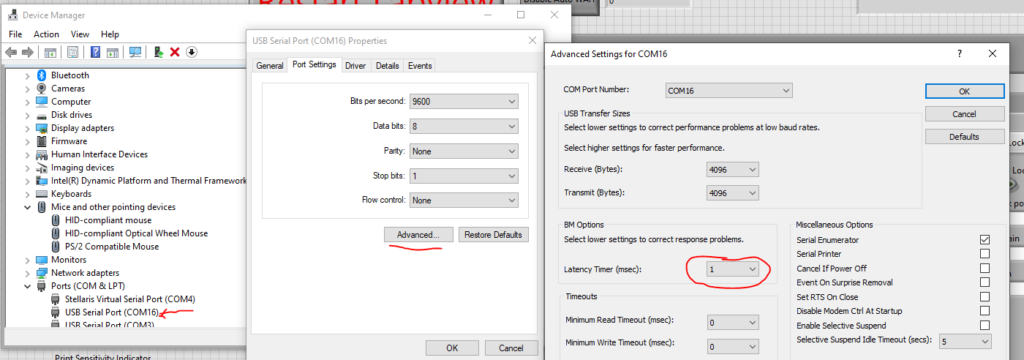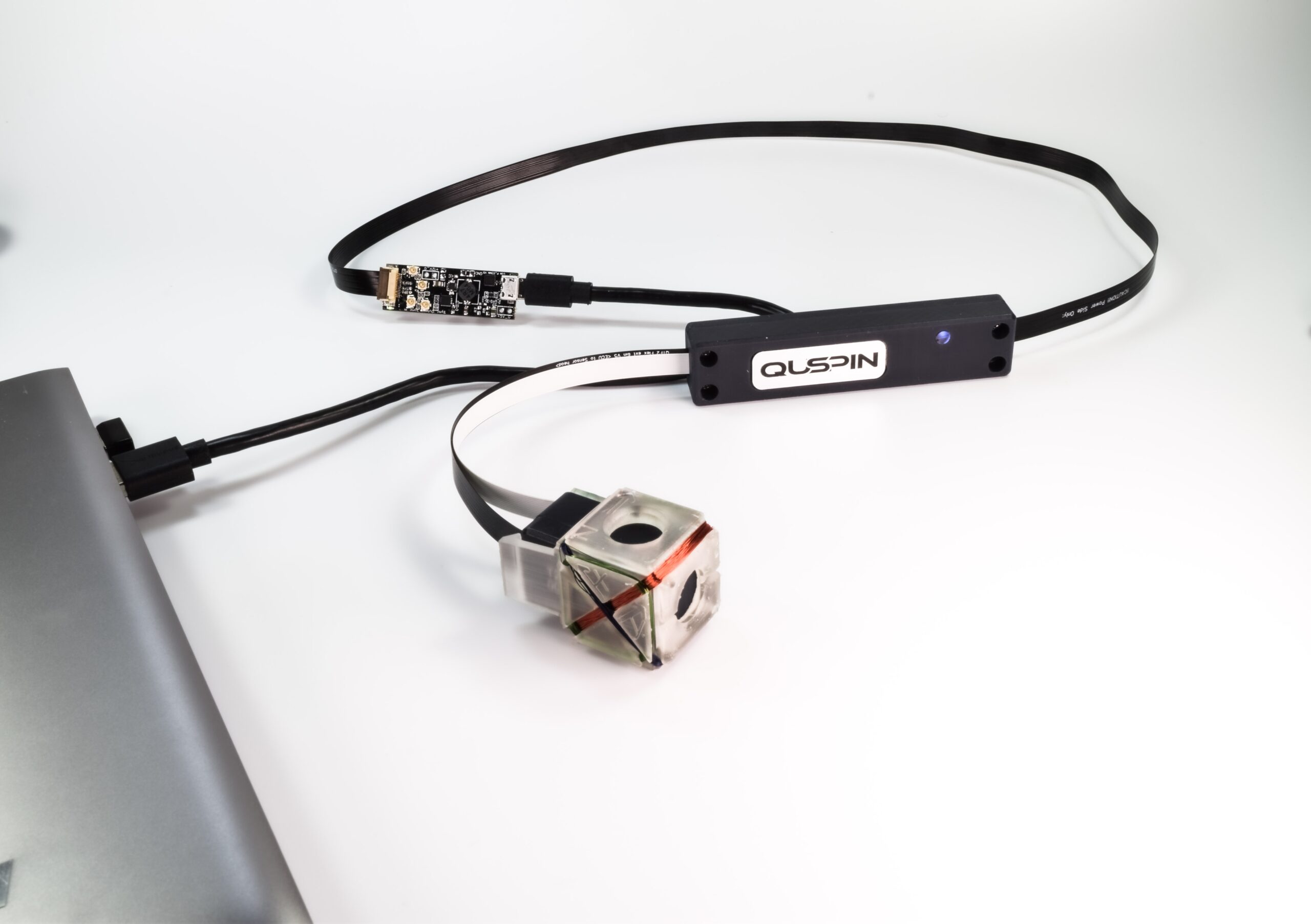♦Quick Start
Part A: Covers using QTFM G2 with a standard comms board plugged into a Windows PC
*Standard comms board is included with every sensor.
(i) Components
• Sensor head w/triax coils: Integrated optics package with laser and rubidium vapor cell that senses the magnetic field
• Electronics controller unit (ECU): Control electronics for the sensor head
• Standard COMMS board: A PCB with power regulation, USB-UART communications bridge, and access to timing and raw digital signals
• A Windows PC
(ii) Hardware setup
The QTFM G2 sensor head is connected to its electronics controller (ECU). The ECU is connected to a standard comms board, and finally, the standard comms board connects to the PC with a USB cable.
Note: Keep the sensor head away from ferrous objects and interference-producing electronic devices such as laptops and power supplies when operating (with a longer USB cable). Ideally, the sensor head should be placed on a non-magnetic surface and a few feet away from electronic devices such as laptops.
(iii) Install User Interface software(Windows)
User Interface Installer: download link (updated Feb-2-2024)
(iv) Identifying the sensor COM port
Open device manager on your Windows PC, and expand the list under the “Ports” menu. The device manager can be opened, for example, by searching for “device manager” in the Windows search bar. When the USB cable connected to the standard comms board is plugged into the PC, a new COM port will appear in the ports list. The newly added port corresponds to QTFM.
Note: For the fastest data transfer speed to the PC, right-click on the COM port corresponding to the sensor in the device manager and select, Properties>Port Settings>Advanced and set Latency Timer (msec) to 1 instead of 16 which is the default.
(v) Using the QTFM user interface software
*set Youtube playback resolution to 1080
Part-1: Com port selection, starting the sensor, and visualizing data [2m:18s]
Notes
•To release the com port, close the user interface or press the “End” key on your PC.
Part-2: Front panel user interface controls (Chart Length, Data Rate, Filters) [1m:32s]
Notes
•Data rate and filter settings are permanent variables. Selected values will be retained after rebooting or power cycle.
•A data rate of 0.004s indicates that the sensor is outputting one sample every 0.004s i.e. 250 Hz.
•At slow data rates, activating a 10 Hz or lower frequency low-pass filter is recommended to remove aliasing artifacts from 50/60 Hz power line noise.
Part-3: Terminal tab to visualize raw data and select Print Items [00m:48s]
Notes
• Raw data can also be seen with any terminal program, for example, TeraTerm at 115,200 baud rate (default)
• Print item selections are stored in permanent variables and not erased after power cycle or reboot. More details on print items can be found in the detailed user guide.
Part-4: Hybrid Scalar-Vector Mode [01m:18s]
Notes
• Requires vector coil attachment
Part-5: File Save [01m:30s]
Notes
The file formatting option shown here is only for files saved on the PC with the standard comms board. Files saved on the SD card of the advanced comms board are processed with separate software (TBD).
